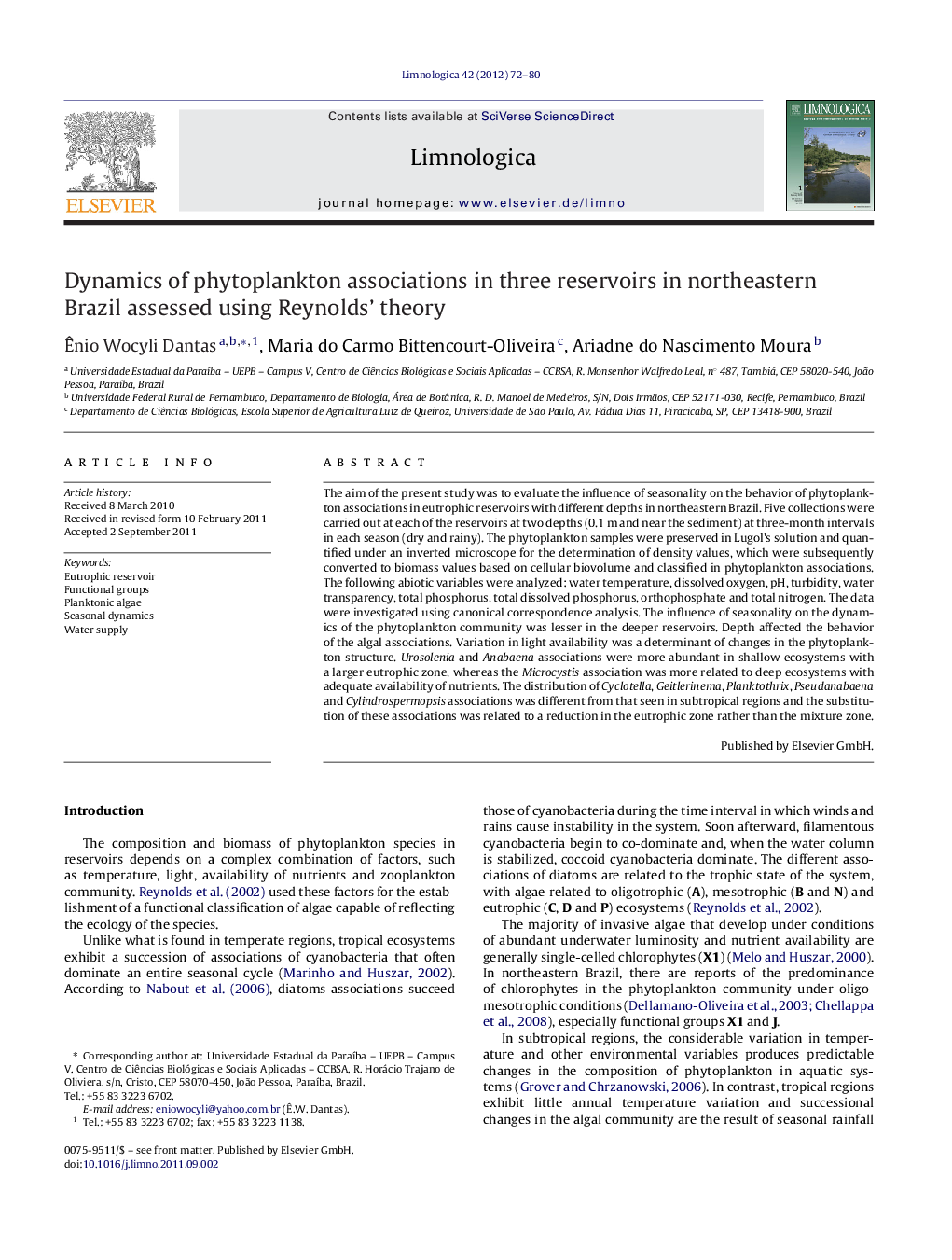| Article ID | Journal | Published Year | Pages | File Type |
|---|---|---|---|---|
| 4400520 | Limnologica - Ecology and Management of Inland Waters | 2012 | 9 Pages |
Abstract
The aim of the present study was to evaluate the influence of seasonality on the behavior of phytoplankton associations in eutrophic reservoirs with different depths in northeastern Brazil. Five collections were carried out at each of the reservoirs at two depths (0.1Â m and near the sediment) at three-month intervals in each season (dry and rainy). The phytoplankton samples were preserved in Lugol's solution and quantified under an inverted microscope for the determination of density values, which were subsequently converted to biomass values based on cellular biovolume and classified in phytoplankton associations. The following abiotic variables were analyzed: water temperature, dissolved oxygen, pH, turbidity, water transparency, total phosphorus, total dissolved phosphorus, orthophosphate and total nitrogen. The data were investigated using canonical correspondence analysis. The influence of seasonality on the dynamics of the phytoplankton community was lesser in the deeper reservoirs. Depth affected the behavior of the algal associations. Variation in light availability was a determinant of changes in the phytoplankton structure. Urosolenia and Anabaena associations were more abundant in shallow ecosystems with a larger eutrophic zone, whereas the Microcystis association was more related to deep ecosystems with adequate availability of nutrients. The distribution of Cyclotella, Geitlerinema, Planktothrix, Pseudanabaena and Cylindrospermopsis associations was different from that seen in subtropical regions and the substitution of these associations was related to a reduction in the eutrophic zone rather than the mixture zone.
Related Topics
Life Sciences
Agricultural and Biological Sciences
Aquatic Science
Authors
Ãnio Wocyli Dantas, Maria do Carmo Bittencourt-Oliveira, Ariadne do Nascimento Moura,
